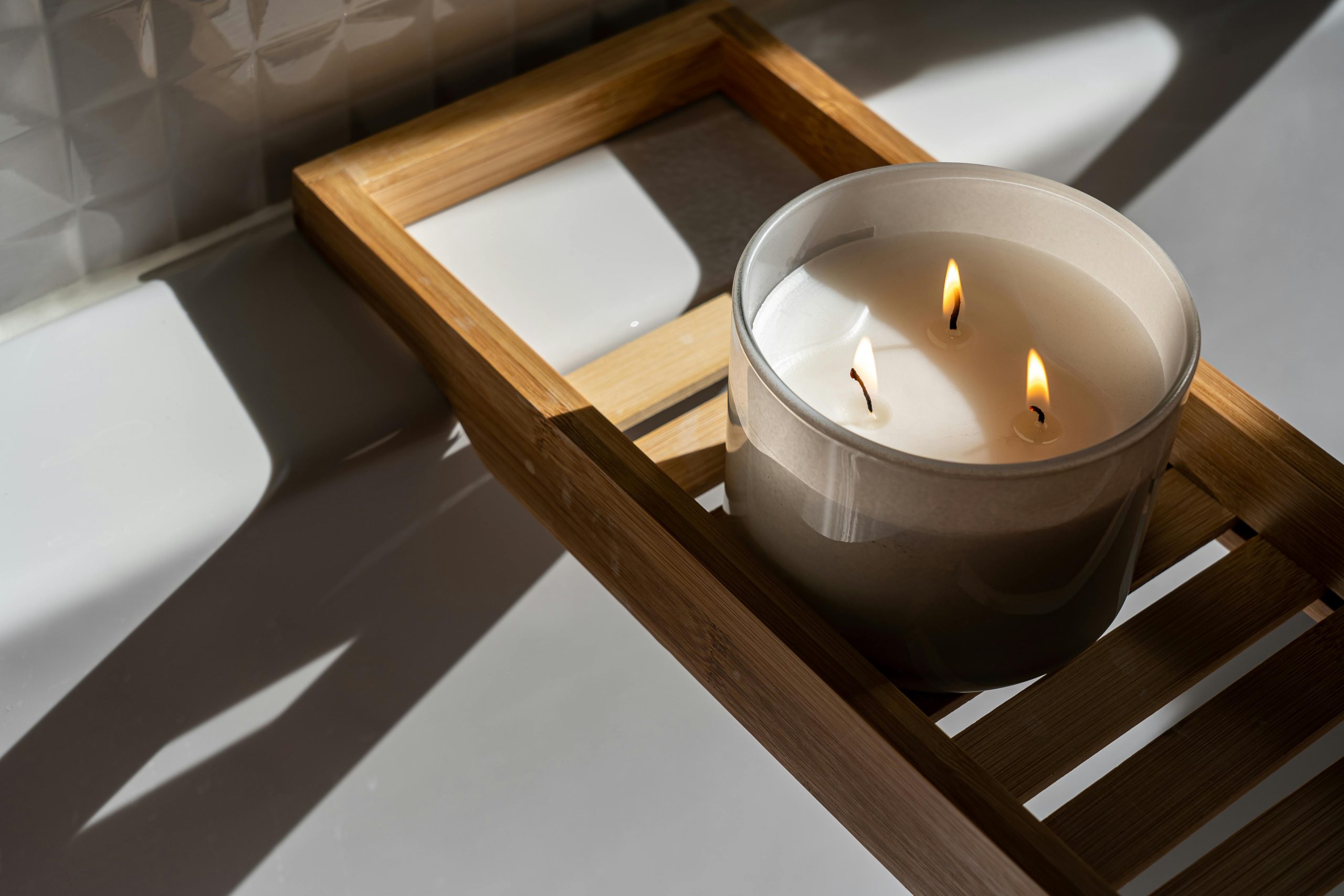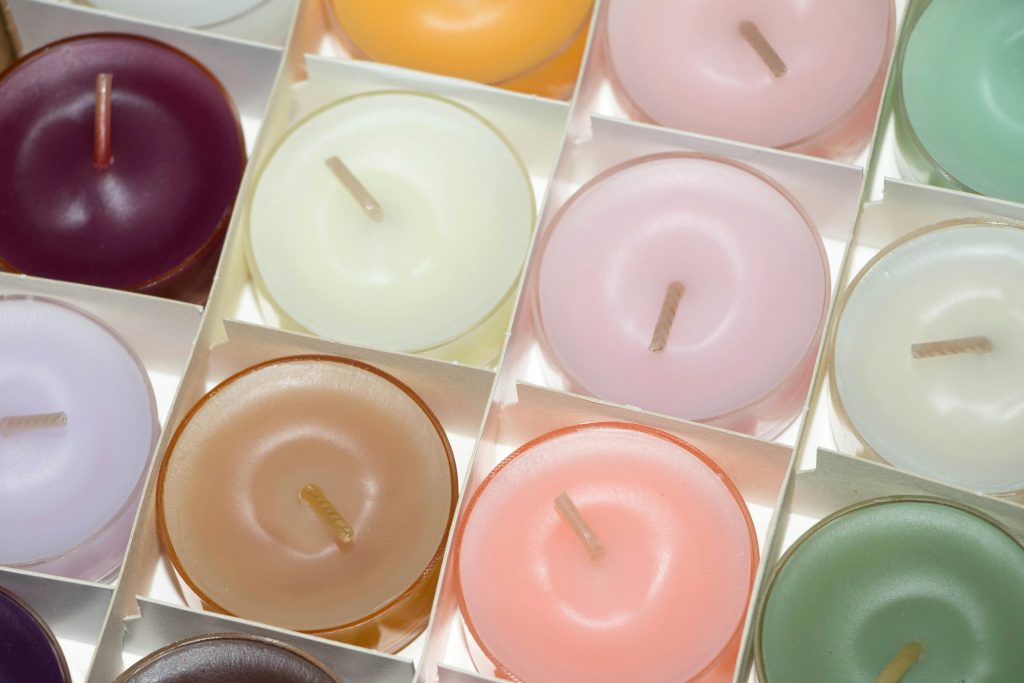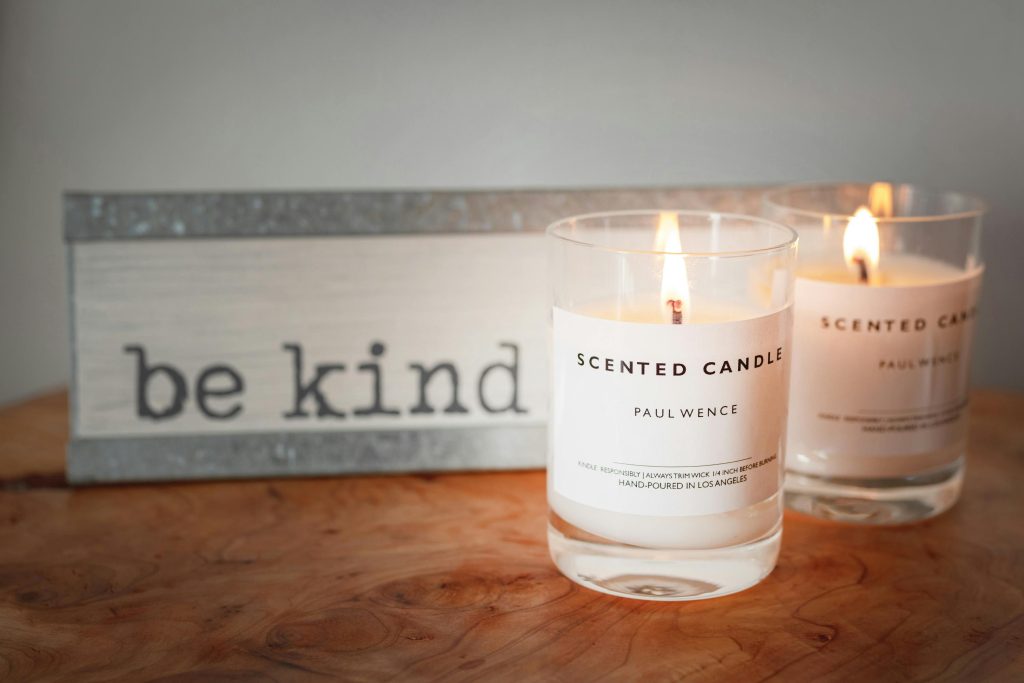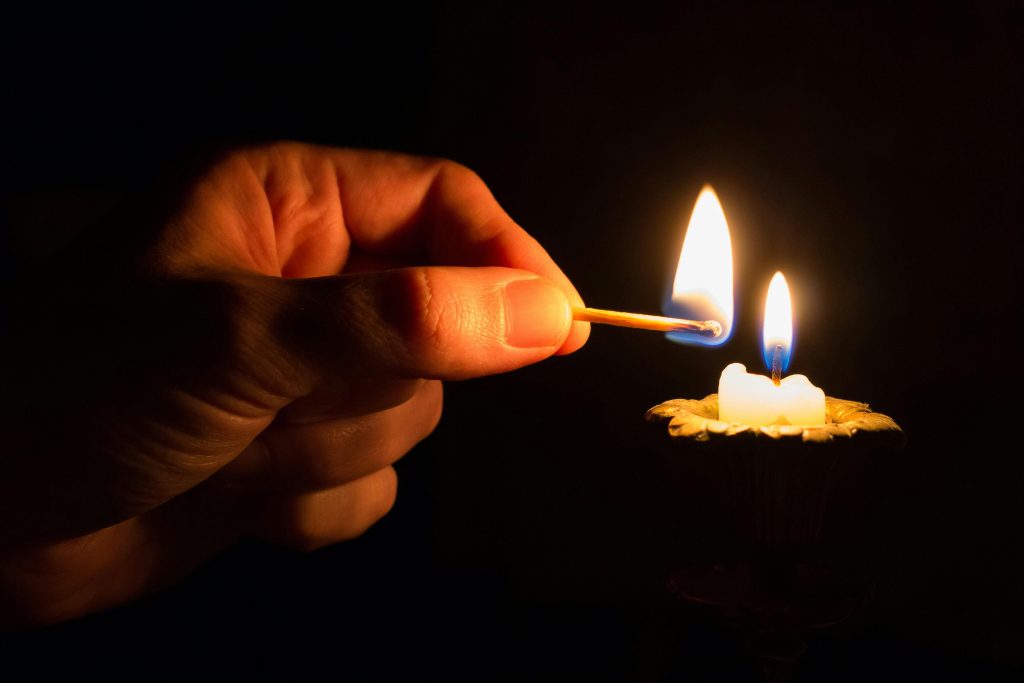Your cart is currently empty!
Beeswax vs. Paraffin: Why Your Candle Choice Could Impact Your Health and Air Quality

For thousands of years, fire has been part of human ritual. We gather around it for warmth, for prayer, for meditation, for sheer comfort in its flickering glow. In modern homes, that elemental connection often lives on in the form of candles. Lighting one at the end of the day feels simple and soothing, a ritual that instantly shifts the atmosphere. But hidden in that glow is a question few pause to consider: what exactly are we breathing in when a candle burns? The answer depends enormously on the kind of wax fueling the flame. While paraffin-based scented candles dominate the market, researchers have found they can release chemicals linked to cancer, hormone disruption, and respiratory issues. In contrast, beeswax candles are increasingly being promoted as a cleaner alternative with some studies even suggesting they may actively improve air quality through the release of negative ions. That claim might sound too good to be true, but the science behind it deserves a closer look.
The debate over candles isn’t simply about choosing a luxury home product. It connects to bigger environmental and health conversations: indoor air pollution, chemical transparency in consumer goods, and the way industries market “natural” or “non-toxic” products. For most people, the very idea that a cozy candle could add endocrine-disrupting phthalates or carcinogenic benzene to their homes is shocking. Yet multiple studies suggest this is precisely what happens when paraffin candles burn. At the same time, advocates for beeswax argue that these candles can act almost like a natural air purifier, reducing dust, allergens, and pollutants. Whether this claim stands up to rigorous scrutiny is complex, but even the possibility raises a fascinating contrast: one candle type may harm the air you breathe, while another may improve it. To separate myth from marketing, let’s dig into the chemistry, the medical insights, and the cultural meaning of what it really means to strike a match.
The Hidden Chemistry of Paraffin Candles
Paraffin is the workhorse wax of the candle industry, derived as a cheap byproduct of petroleum refining. It’s no accident that paraffin dominates the global market: it melts evenly, holds scent well, and is easy for manufacturers to mass-produce. Yet its petroleum origins are exactly what concern environmental health researchers. When paraffin burns, it releases volatile organic compounds (VOCs), a broad group of chemicals that include some heavy hitters of toxicology: benzene, toluene, formaldehyde, and polycyclic aromatic hydrocarbons (PAHs). These compounds are not abstract worries they are substances the Environmental Protection Agency and World Health Organization have linked to respiratory irritation, neurological effects, and even cancer with long-term exposure.
Studies vary in how much these candles actually emit. A 2015 simulation of indoor candle use measured formaldehyde levels from a strawberry-scented paraffin candle at over 2,000 parts per billion, and a kiwi-melon version at more than 12,000 parts per billion both far above commonly cited safe ranges. These were controlled conditions, but they highlight how certain formulations can spike pollutant levels.

Add in synthetic dyes and fragrances, which often contain phthalates and other endocrine-disrupting chemicals, and you have a potent chemical cocktail swirling in what should be the safety of your home. While the candle industry insists that emissions are negligible and candles are “safe when used as directed,” those assurances come with caveats. Most safety testing is conducted or funded by trade groups whose member companies profit from paraffin products. Independent research tells a murkier story, one where frequent exposure in poorly ventilated rooms raises legitimate concern.
For individuals already vulnerable people with asthma, COPD, or compromised immune systems those exposures can be more than an irritant. Even otherwise healthy individuals may find that burning cheap scented paraffin candles in small spaces triggers headaches, dizziness, or eye irritation. It’s important to recognize that unlike outdoor smog or secondhand smoke, candle emissions are voluntary exposures. People bring them into their own homes seeking comfort, unaware of what else they are inviting into their lungs. In this way, paraffin candles exemplify a larger issue in consumer safety: products marketed as harmless luxuries may hide risks that science is still untangling.
How Beeswax Works

Beeswax candles tell a very different story. Unlike paraffin, beeswax is not an industrial leftover but a natural secretion produced by honeybees to build their hives. This origin already sets it apart: it requires minimal processing, avoids petroleum entirely, and comes with a subtle honey-like aroma that needs little or no added fragrance. Advocates say beeswax burns cleaner than paraffin, releasing fewer VOCs and particulates. But the most intriguing claim goes further: that burning beeswax actually cleans the air by generating negative ions.
Negative ions are molecules that have gained an extra electron, and in the atmosphere they are often produced by natural processes such as waterfalls, thunderstorms, and ocean waves. Some research suggests that negative ions can attach to airborne particles like dust, pollen, smoke, and bacteria, causing them to drop out of the air. In theory, a beeswax candle could replicate this effect on a micro scale, functioning as a natural air purifier. Studies conducted in Japan and cited by beekeeping advocates have measured significant negative ion production from beeswax flames in some cases reporting particle counts in the hundreds of thousands per cubic centimeter. While these figures sound impressive, scientists caution that more peer-reviewed studies are needed to confirm the real-world impact. Controlled laboratory results don’t always translate neatly to an ordinary living room, where airflow, room size, and candle design all change the equation.
Still, the plausibility of the mechanism gives the claim weight. Unlike soy or paraffin candles, beeswax requires no hydrogenation, bleaching, or chemical additives to function as a candle wax. Its purity, coupled with its potential ionizing effect, makes it attractive to health-conscious consumers. Even if beeswax’s negative-ion production turns out to be modest in daily life, the fact remains: it is far less likely to emit harmful compounds compared with paraffin. Choosing beeswax is therefore not just about avoiding toxins but about leaning toward a product with positive, if still debated, side effects.
Regulation, Transparency, and the Problem of Fragrance

One of the most frustrating aspects of the candle debate is the lack of transparency. Unlike food or cosmetics, candles are subject to minimal regulatory oversight when it comes to chemical composition. ASTM International standards focus on fire safety and packaging, not the emissions or contents of the wax itself. Manufacturers are not required to disclose every chemical in their fragrance blends, and many hide behind the label “fragrance” as a trade secret. This means that a candle sold as “soy-based” may contain only a fraction of soy wax, blended with paraffin, and consumers have no way of knowing.
This lack of regulation has created an environment where greenwashing thrives. Brands market products as “natural,” “non-toxic,” or “eco-friendly” with little accountability for what those claims mean. For example, “soy” candles often rely on industrially hydrogenated soy oil, which may itself be genetically modified and chemically processed. Likewise, essential oils marketed as safer scent alternatives may undergo chemical alteration when burned, producing unexpected byproducts. Without third-party testing or mandatory labeling, consumers are left to navigate a marketplace where health claims can outpace the science.
For beeswax candles, the challenge is slightly different. While beeswax is inherently natural, it can still be adulterated during production. If exposed to chemical-treated water, excessive heat, or contaminants, its purity can degrade. Some candles marketed as beeswax may actually be blends, again cutting costs by mixing with cheaper paraffin. Consumers looking for the true benefits of beeswax need to seek out brands that explicitly state “100% pure beeswax” and back that claim with transparency. In short: whether you want to avoid endocrine disruptors or chase negative ions, clarity of labeling is key and right now, the industry doesn’t make that easy.
Who Should Think Twice About Burning Candles

While beeswax may be the safer choice, it’s important to note that burning anything indoors will always release some level of particulates. For certain populations, even small amounts of additional indoor pollution can be problematic. Pulmonologists point out that people with asthma, chronic obstructive pulmonary disease (COPD), or other respiratory conditions are especially sensitive. Infants, young children, and pregnant individuals also face higher risks because developing lungs and immune systems are more vulnerable to airborne toxins. For people undergoing monitoring or treatment for bladder cancer, there is some evidence though limited and mixed suggesting a possible link between hydrocarbon exposure and bladder risk.
That doesn’t mean everyone must give up candles entirely. For many people, occasional use of beeswax candles in a ventilated space is unlikely to pose danger, and may even provide benefits through improved ambiance and reduced allergens. The key is mindful use: burning candles as a short ritual rather than a constant source of scent, choosing high-quality waxes and wicks, and prioritizing air circulation. It’s about shifting the mindset from thoughtless indulgence to intentional practice. Candles are not just decoration; they are small chemical events happening in the heart of your home. Awareness is what transforms them from hidden hazard to safe ritual.
Guidelines for Safer Candle Use

For those who want to keep their candles while minimizing risk, several strategies are consistently recommended by health experts and environmental advocates.
- Pay attention to wax. Choose candles labeled as 100% beeswax, or at least 100% soy or stearin, and avoid vague terms like “soy-based.”
- Avoid dyes and cheap fragrance oils, as these increase the chance of releasing harmful compounds.
- Look at the wick: cotton, wood, or paper are safe choices, while metal-core wicks though banned in many countries may still appear in imported products. Trimming the wick to a quarter inch before lighting helps reduce soot.
- Ventilation is equally critical. Burn candles only in larger, well-ventilated rooms and open windows afterward to flush out pollutants.
- Avoid burning them for hours on end, especially in small enclosed spaces like bathrooms. If a candle begins emitting visible black smoke, extinguish it immediately; this indicates incomplete combustion and higher particulate release.
- Consider alternatives when you want extended ambiance. Flameless LED candles now mimic natural flicker convincingly, while wax melts on low-heat warmers release scent without combustion byproducts. For those seeking actual air purification, a HEPA filter remains far more effective than any candle flame.
The Balance Between Ritual and Risk
Candles occupy a fascinating cultural space. They are symbols of memory, tools for meditation, romantic props, and markers of celebration. To learn that these tiny rituals may pollute the air or disrupt hormones can feel unsettling, almost like a betrayal of trust. But the story is not one of alarmism it is one of balance. Paraffin candles, especially when dyed and heavily scented, carry risks that are well-documented in chemistry and toxicology. Beeswax candles, by contrast, offer a path toward cleaner burning, and perhaps even air-improving benefits, though the latter claim remains an open scientific question.
The lesson is not to abandon candles entirely, but to choose them with eyes open. Light becomes ritual when it is intentional. When you strike a beeswax candle, you are not only creating ambiance, you are making a choice for air that is freer of endocrine-disrupting, cancer-linked toxins. You are aligning with a natural product of bees, one that has served humanity for millennia. The flame itself becomes a reminder: comfort should never come at the cost of unseen harm. By being mindful about what we burn, how often, and where, we can reclaim the candle as a source of warmth and clarity rather than hidden pollution.
